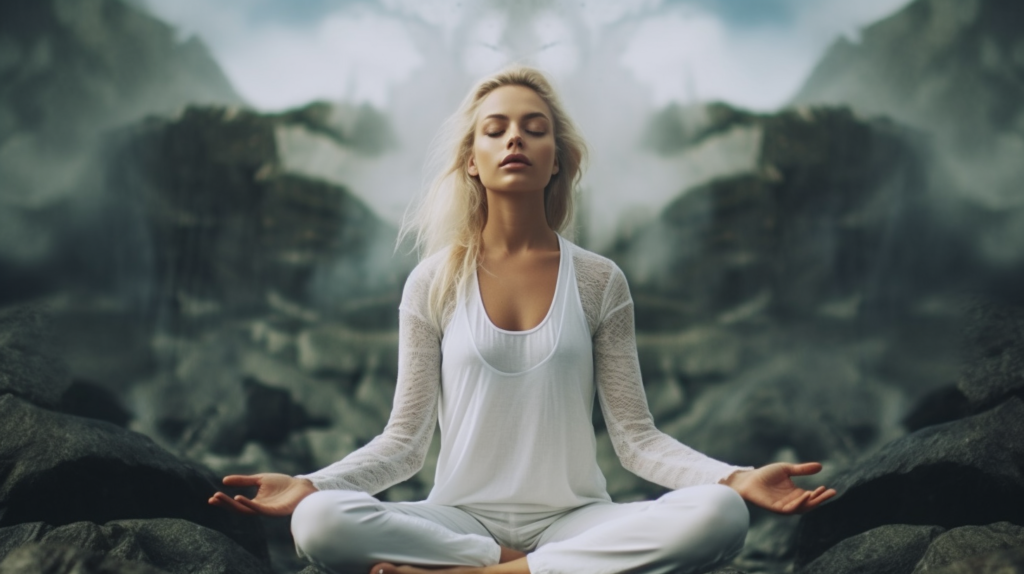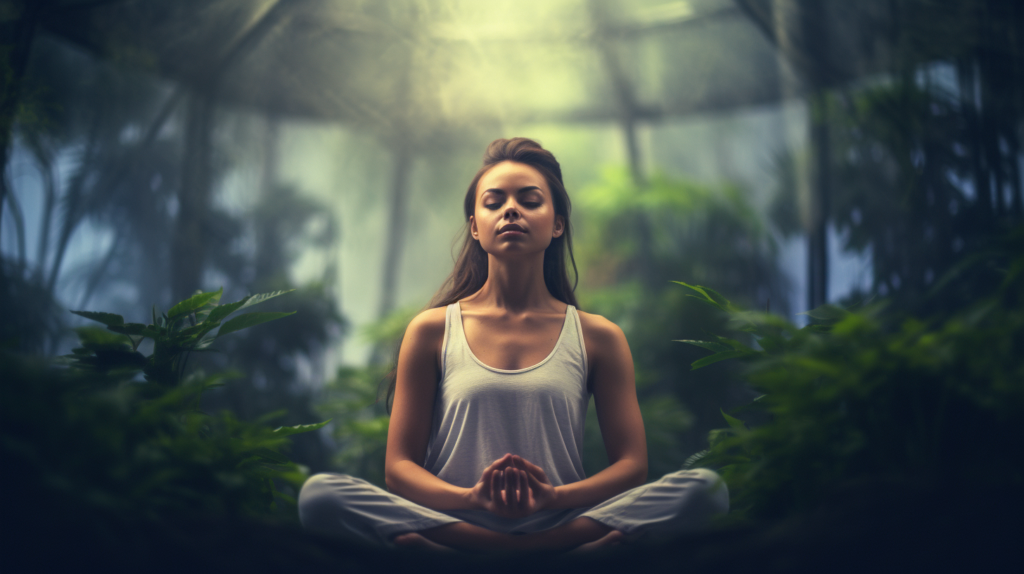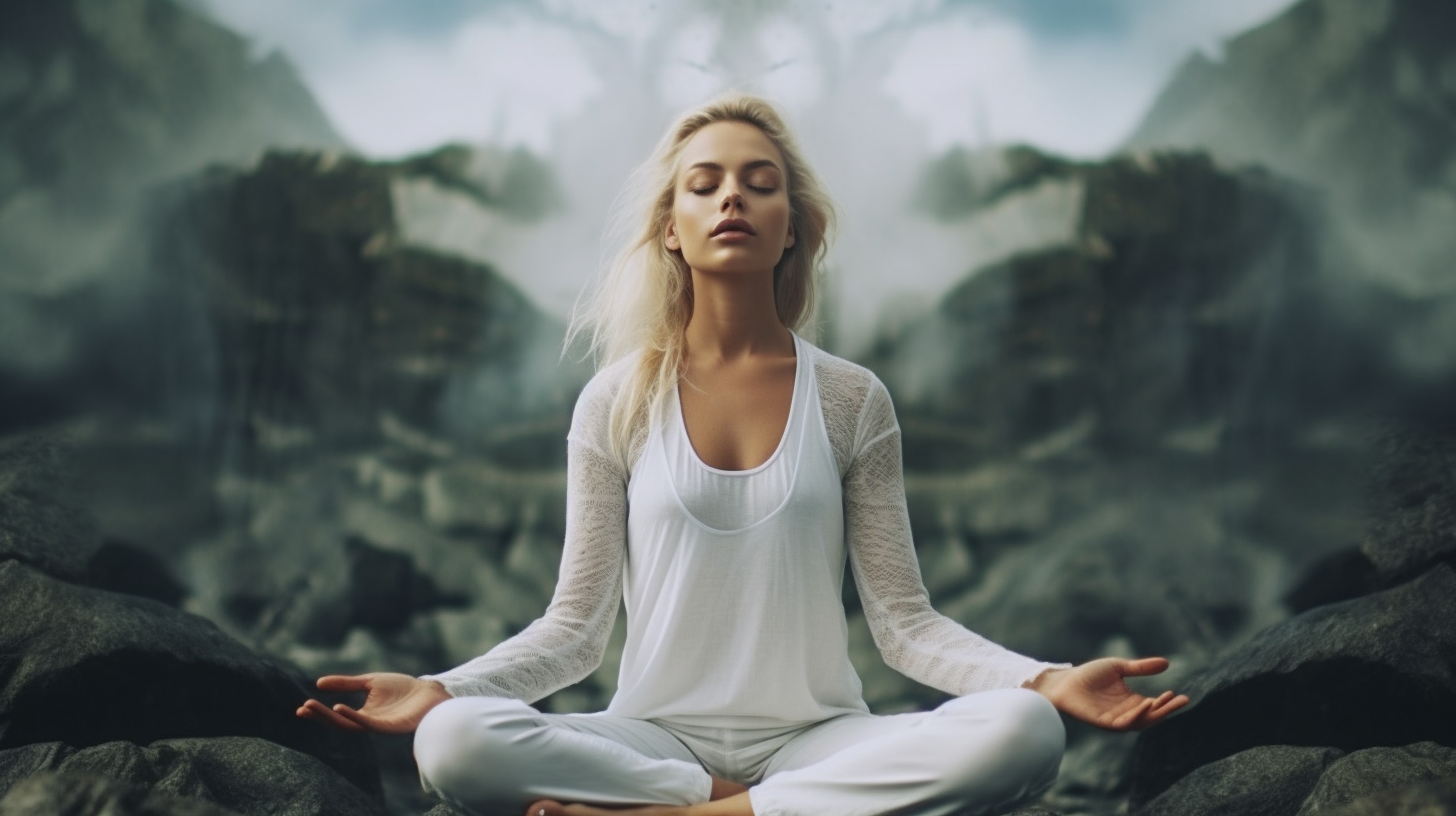We all know life can be busy and demanding. And sometimes it’s hard to remember to take a few moments to ourselves to center ourselves and clear our minds. Mindful meanderings is here to help—exploring the paths of meditation and mindfulness, this article will get you started on your journey to creating a life of clarity in a world of chaos.
1. Introduction to Mindful Meanderings
Mindful meanderings is a practice of simply concentrating on the here and now. It’s a way to observe, acknowledge, and become immersed in the present moment – without judgement or attachment.
Mindful meanderings helps one to be fully alive in the moment. With consistent practice, one can cultivate a space of stillness and tranquility, away from the busyness of the world. The practice of mindfulness encourages one to actively notice the details of the present moment, savoring and appreciating the beauty of life.
This practice can take many different forms, from meditations to walks in nature to simply focusing on one’s own breath. All that matters is what helps one be aware and present. Aside from noticing the specifics of the present moment, mindful meanderings can help one gain insight into their feelings and emotions.
- Observe: Focus on the details of the moment and observe the thoughts and feelings that arise.
- Acknowledge: Accept the thoughts and feelings, without judgment.
- Release: Let go of thoughts and feelings, refocusing attention to the present moment.

2. Exploring the Benefits of Meditation
Though meditation has been around for centuries, there’s still a lot of mystery about the practice. Taking the time to go inwards, often in complete silence, has been linked to a plethora of health and mental benefits. Whether you’re a meditator or just curious, here are some of the proven advantages of a regular meditation:
- Better control of emotions – Regular meditation can help resula in an improved regulation of emotions. This could allow people to keep their cool in a more efficient manner, preventing the build up of stress and high emotions throughout the day.
- Heightened self-awareness – While meditation can make us more mindful in day-to-day life, it also may create a heightened sense of self-awareness. Engaging in the practice of meditation can challenge our limited beliefs and behavioral patterns, allowing us to think more freely and accept ourselves as we are.
- Long lasting relaxation – Meditation is not only relaxation in that moment – it also can lead to more permanent relaxation effects. With regular training, the body and mind learn to stay in this relaxed state even after the practice, helping to manage feelings of stress and anxiety on a fundamental level.
These remarkable benefits of meditation are just the beginning. Taking the opportunity to explore the practice, one can learn to develop a deeper sense of well-being and uncover how to create positive change in life.
3. Heightened Awareness Through Mindfulness
Living In The Moment
Mindfulness is a powerful practice that has the potential to heighten one’s awareness and bring clarity to seemingly mundane moments. By being mindful to the here and now, life can take on a new richness otherwise unseen when racing through one’s routine.
Through developing this habit, time slows down as moments become cherished. Small details in conversations, tears of joy, a child’s laughter, these moments all become appreciated in a new way. Narcissistic tendencies are simply not possible as the focus is only on feeling the joy, sadness, and the depth of the present experience.
The art of mindfulness brings an appreciation of the moment and sets the foundation for a compassionate and connected world. Through mindful practices like meditation, breathing exercises, and mindful movement, the habit of living in the present becomes more reflexive. This heightened awareness brings forth opportunities for transformational experiences that just weren’t available before.
- Meditation: a powerful practice to develop a heightened awareness
- Breathing Exercises: simple routines to bring focus to the present
- Mindful Movement: a practice to bring mindfulness to physical activities

4. Connecting With the Power of Nature
Nature is a powerful force that can be beneficial to our wellbeing and our mental health. By connecting with nature, we can feel a stronger sense of peace, relaxation, and balance. Connecting with nature helps us to get back in touch with our natural environment and its calming energy.
- Go outdoors and take in the scenery: Watching a sunrise or sunset, or a beautiful landscape, can help us to restore our connection with nature. This is also a great time to sit in contemplation and take some deep breaths.
- Find a calming sound or rhythm: Listen to the sound of rain, the rustling of trees, or the crashing of waves for a calming release.
- Spend time in stillness and solitude: Taking the time to be alone outdoors can help clear your mind and realign yourself with the rhythms of nature.
Engage in an activity in nature: Whether it’s going for a walk, doing yoga outdoors, or some other type of physical activity, engaging in activities in nature can help us reconnect with our environment. It can also be a great way to clear our minds and fill our heart with joy.
5. Finding Inner Peace Through Reflection
Peace of mind is essential for a happy life, and reflection is a great way to nurture inner serenity. It is not always easy to take the time to clear our minds and gain inner peace, but incorporating reflections into your routine can have a profound effect on your mental and emotional health.
Here are 5 tips to help you find inner peace through reflection:
- Let Go of Negative Thoughts
- Connect with Nature
- Schedule Time for Reflection
- Try Free Writing
- Practice Mindful Meditation
Letting go of negative thoughts can be challenging, but it is an important step in harnessing your inner peace. Take a moment to observe any worries or anxieties that might be lingering in your mind and gently let them go. Free writing is an effective tool for redirecting your thoughts and exploring your feelings. Grab a paper and pen and write down your thoughts and feelings without any structure or filters. Once you have cleared your mind, take a few moments to be mindful and observe your environment, perhaps by enjoying a few moments of solitude in nature.

6. Strategies for Bettering Your Mindfulness Practice
Mindfulness is a lifelong practice and can be improved with conscious effort. Here are a few strategies to help refine your mindfulness practice:
- Meditation: Spending a few minutes each day in traditional meditation practice can help to clear one’s mind of anxieties and negative thoughts. Committing to a regular practice keeps the mind focused and strengthens emotional resilience.
- Amplify Positive Thinking: Replacing negative thoughts with more empowering ones is a powerful way to shape one’s mindset. Practicing gratitude, self-love and positive affirmations on a regular basis can help to create a more positive mental landscape.
Making connections between thoughts, emotions and external stimuli can also help improve one’s relationship to mindfulness. Actively assessing one’s own attitude, energy and reactions to different events and scenarios is a great way to gain insight and further hone mindfulness.
7. Setting Up A Meditation Space
The tranquil atmosphere of your meditation space is crucial for your daily practice. You want to create a tranquil corner that helps you to prod deeper into your inner being.
Here are a few steps to setting up a personal meditation space:
- Find a peaceful corner: Choose a corner with minimal distractions, like a spare room, a corner of your bedroom, or any other area that will provide you with a sense of peace and solace. Make sure the lighting is soft and dim and the temperature comfortable.
- Purify the energy: This step is optional but recommended — burn some incense or sage to purify the energy in the space. Make the invocation of your preferred deity or higher power.
- Add artifacts: The next step is to add artifacts and music that will make you feel centered. This could be in the form of photos, representations of divinity, an oil lamp, or a candle. You can also choose music that puts you in a state of bliss.
These simple steps can help you set up a tranquil space that will boost your meditation sessions for months to come.
8. Traditional Buddhist Meditation Techniques
Buddhist meditation techniques are an ancient and important form of mindfulness practice. Throughout the ages, monk and lay practitioners alike have relied on these traditional methods in order to deepen their understanding of their inner lives and to develop compassion for others. There are many techniques to choose from and each offer a unique approach to skillful living. Here are eight of the most popular:
1. Vipassana: This practice of insight meditation is a cornerstone of Buddhist philosophy. It centers on the idea of mindfulness, bringing attention to the present moment and noticing the subtle sensations of the body. With each breath, practitioners come back to their bodily experience and can learn to observe their thoughts and feelings with greater clarity.
2. Metta: Metta, or loving-kindness meditation, is based on the cultivation of unconditional love and kindness. Through Metta, practitioners can learn to be more accepting and compassionate with themselves and others. This technique can also be a helpful tool for developing resilience when facing challenging situations.
3. Tonglen: This practice focuses on developing empathy and helping to heal suffering. Practitioners send metta out to everyone they encounter and take in the suffering of others, thereby cultivating a sense of shared humanity, interconnectedness, and understanding.
4. Zazen: This is a Zen meditation practice that focuses on establishing a quiet and settled presence within. Through sitting still, followers can learn to be more mindful of their environment, and to observe and try to let go of the mind’s habitual patterns of thought.
5. Tranquil Abiding: This practice focuses on restoring serenity and a sense of peace to one’s daily life. Through deliberately practicing awareness of the breath and body, practitioners can learn to slow down and appreciate each moment.
6. Amitabha Recitation: This method of devotional meditation uses the repetition of Amitabha Buddha’s name in order to remind practitioners of their enlightened nature. This practice helps one to experience an openness and clarity of mind, and to cultivate gratitude.
7. Visualization: Visualization is a powerful tool for bringing about transformation in one’s life. Through focused concentration and visualization of inspiring images, users can experience a greater sense of joy, clarity, and connection to their inner life.
8. Chanting: Chanting is a form of meditation in which practitioners use mantras and sacred syllables in order to invoke a transformative spiritual experience. Chanting can be a powerful means of connecting with one’s inner self and of deepening one’s understanding of Truth.

9. Building Mindful Habits for a Happier and Healthier Life
Our daily duties can easily take over our lives and make us forget about taking care of our mental and physical health. Mindfulness can help us find balance, leading to a richer and more rewarding life.
Habits can be the key for creating and living a mindful life. Here are some key steps for building mindful habits:
- Meditate – Find time each day to practice meditation, even if it’s only for a few minutes. Small doses of meditation can help you come back to center and help you be present in the moment.
- Take Breaks – Make sure you are taking a few breaks during the day to breathe and clear your mind. Step away from your desk or take a quick walk outside for five minutes and immerse yourself in nature.
- Sleep Well – Aim for 8 hours of quality sleep every night. A lack of sleep can lead to poor mental performance and physical and mental health issues. Make sure you are following a proper sleep regimen.
These are just some of the steps you can take to build mindful habits for a happier and healthier life. Take a mindful approach to life and pay more attention to the details of the present moment. Try adding mindfulness and building quick mindful habits to your everyday life and see the differences it will make.
10. Exploring the Wonders of Mindful Meanderings
Mindful meanderings are an important practice for developing mindfulness. The very nature of mindfulness means that, as an activity, it involves focusing on the present moment and being conscious of one’s surroundings. Through a mindful meander, one has the opportunity to fully explore the beauty, peace and joy of the world around them, allowing them to recharge and rejuvenate.
- Awareness of Nature – As one begins to navigate a mindful meander, they will likely notice the beauty of the natural world around them. From the vibrant colours of a blooming flower, to the warmth of the sun’s rays, to the gentle sound of a babbling stream, they will become more aware of the wonders of nature.
- Minding the Body – The next step in exploratory meandering is to pay attention to one’s body. Feel the grass beneath your feet, the wind against your cheeks, the chirping of the birds above your head – each sensation providing a moment of pure delight.
- Discovering Quietness– As one continues along their mindful meander, they begin to settle into their environment, can feel their stress melt away, and discover true quietness within the journey. The bubbles of insight that arise during these moments of peace are ones to be savored and treasured.
Meandering mindfully is an enriching experience that allows one to connect with their true self, develop greater appreciation for the world around them, and recharge their spirit. With practice, it is possible to achieve a lasting sense of inner balance and joy, no matter the circumstances.
Mindful Meanderings is a journey of exploration and discovery. It is a path to discovering the transformative power of meditation and mindfulness, and the way it can help us live our lives with greater wellbeing. With patience and dedication, each of us can incorporate this practice into our lives and find a newfound sense of peace and relaxation. Take a moment to go on your own journey and find the path that leads to a more mindful life.
